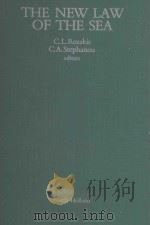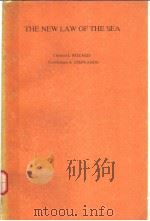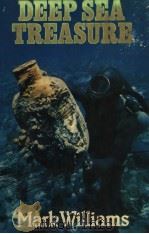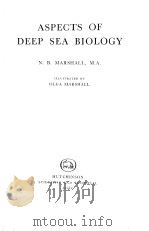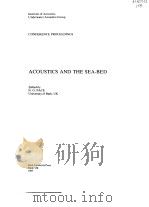《THE LAW OF DEEP SEA-BED MINING》
| 作者 | 编者 |
|---|---|
| 出版 | ALMQVIST & WIKSELL INTERNATIONAL |
| 参考页数 | 362 |
| 出版时间 | 1987(求助前请核对) 目录预览 |
| ISBN号 | 9122011560 — 求助条款 |
| PDF编号 | 812894328(仅供预览,未存储实际文件) |
| 求助格式 | 扫描PDF(若分多册发行,每次仅能受理1册) |
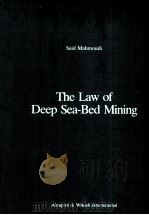
Preface11
Abbreviations13
List of Cases15
PART ONE-Overview19
Chapter One-Preliminary Remarks19
1.1General Introduction19
1.1.1 Presentation of the Problem19
1.1.2 The Purpose of the Study23
1.1.3 The Approach to the Problem24
1.2 Deep Sea-Bed and Its Mineral Resources26
1.2.1Basic Facts27
1.2.2 The Economic Significance of the Deep Sea-Bed30
1.2.3 The Technology for Deepsea Mining31
1.2.4 The Actors33
1.3The United Nations' Response36
1.3.1 The Sea-Bed Committee36
1.3.2The Conference39
1.3.2.1 The Structure40
1.3.2.2 The Procedure42
1.3.2.3 The Progress of the Work45
1.3.3 The Convention48
Chapter Two-The Frontiers of the Deep Sea-Bed51
2.1The Era of Coastal Claims to the Sea-Bed53
2.1.1 Background to the Claims before 194553
2.1.2 Truman Proclamations of 194555
2.1.3 The Work of the International Law Commission58
2.1.4 The United Nations Conferences in 1958 and 196060
2.1.5 North Sea Continental Shelf Cases63
2.2The Era of Community Claims to the Sea-Bed65
2.2.1 The Sea-Bed Committee66
2.2.2 UNCLOS Ⅲ68
2.3 Article 7673
Appraisal79
PART TWO-The Legal Status of the Deep Sea-Bed85
Chapter Three-The Classical Bases of Claims to the Sea-Bed85
3.1Claims of Rights Based on Res Nullius Concept87
3.2 Claims of Rights Based on Res Communis Concept and the Freedom of the High Seas103
3.3 Claims of Rights Based on Non-Prohibition in International Law112
Appraisal115
Chapter Four-The Principle of the Common Heritage of Mankind119
4.1Developments During 1967-1970119
4.1.1 Malta's Proposal119
4.1.2 Reactions to Malta's Proposal121
4.1.3 The Content of Malta's Proposal and the Item before the Sea-Bed Committee122
4.1.4 Attitude of Different States about the Deep Sea-Bed at the Time of Submission of Malta's Proposal122
4.1.5 Malta and the Common Heritage of Mankind123
4.1.6 Opponents to the Common Heritage of Mankind124
4.1.7 Supporters of the Common Heritage of Mankind126
4.1.8 Moratorium Resolution130
4.2Declaration of Principles132
4.2.1 The Long Way to the Compromise132
4.2.2 Adoption of the Declaration133
4.2.3 Declaration and the Question of the Legal Status of the Deep Sea-Bed134
4.2.4 The Binding Force of the Declaration140
4.3Development of the Common Heritage Principle Since 1970149
4.3.1 An Encroachment to the Common Heritage:EEZ149
4.3.2 Developments inside the United Nations151
4.3.3 Developments outside the United Nations157
4.4 The Legal Status of the Deep Sea-Bed and the Convention164
Appraisal167
PART THREE-The Constituent Elements of the Legal Regime for the Deep Sea-Bed171
Chapter Five-Utilization System171
5.1The Development of the Utilization System in the United Nations171
5.1.1From Hopeful Optimism to Stalemate,1969-1976172
5.1.1.1 Utilization of the Area for Peaceful Purposes173
5.1.1.2 Utilization of the Resources for the Benefit of Mankind175
5.1.1.3 Initial Negotiating Positions178
5.1.1.4 Polarization of the Issue180
5.1.2 Towards a Compromise,1977-1980188
5.1.3 A Return to Disparity,1981-1982201
5.2Utilization System in the Convention203
5.2.1The Right of Access207
5.2.1.1 Technology Transfer209
5.2.1.2 Site-Banking Scheme211
5.2.1.3 Financial Undertakings211
5.2.2The Balance of Rights215
5.2.2.1 Restrictive Measures215
5.2.2.2 Preferential Measures218
5.2.3 Viability of the Parallel System222
5.3Utilization System outside the Convention225
5.3.1General Features of National Legislation228
5.3.1.1 Definitions228
5.3.1.2 Declared Purposes229
5.3.1.3 Legal Bases230
5.3.2Rights and Obligations under National Legislation233
5.3.2.1 Scope of Activities234
5.3.2.2 Temporal Scope235
5.3.2.3 Subjects of Law235
5.3.2.4 Qualifications of Applicants237
5.3.2.5 Size and Number of Mine Sites238
5.3.2.6 Similarities with the Provisions of the Convention238
5.3.2.7 Financial Terms239
5.3.3 National Legislation and Existing International Law242
Appraisal252
Chapter Six-Utilization Machinery255
6.1The Need for an International Machinery256
6.2The International Sea-Bed Authority266
6.2.1 The Status and General Features266
6.2.2The Mandate and Functions267
6.2.2.1 Organizing Function267
6.2.2.2 Controlling Function268
6.2.2.3 Administering Function269
6.2.3Organs of the Authority271
6.2.3.1 The Assembly272
6.2.3.2The Council273
1.Composition274
2.Voting Procedure275
3.Organs278
4.Power Distribution between the Assembly and the Council280
6.2.3.3 The Enterprise283
6.2.3.4 The Secretariat286
6.3Settlement of Disputes Relating to the Deepsea Mining287
6.3.1Disputes Settlement System of the Convention287
6.3.1.1 Development of the System287
6.3.1.2 Types of Fora290
6.3.2Disputes Relating to the Activities in the Area292
6.3.2.1 Institutions293
6.3.2.2Scope of Jurisdiction294
1.Advisory Opinion294
2.Contentious Procedures295
6.3.2.3-Procedures and Applicable Law300
Appraisal302
PART FOUR-A View of the Future309
Chapter Seven-Interim Arrangements309
7.1Features of the Preparatory Commission310
7.1.1 Purposes and Functions310
7.1.2 Organization311
7.1.3 Decision-Making311
7.2Issues before the Commission313
7.2.1 Preparatory Investment Protection313
7.2.2Establishment of the Authority and the Tribunal321
7.2.2.1 Rules of Procedure of the Organs of the Authority322
7.2.2.2 Developing Land-Based Producer States324
7.2.2.3 The Enterprise326
7.2.2.4 The Sea-Bed Mining Code329
7.2.2.5 The Law of the Sea Tribunal331
Appraisal333
Chapter Eight-General Conclusions335
Bibliography343
Index357
1987《THE LAW OF DEEP SEA-BED MINING》由于是年代较久的资料都绝版了,几乎不可能购买到实物。如果大家为了学习确实需要,可向博主求助其电子版PDF文件(由 1987 ALMQVIST & WIKSELL INTERNATIONAL 出版的版本) 。对合法合规的求助,我会当即受理并将下载地址发送给你。
高度相关资料
-
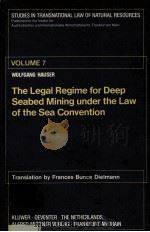
- THE LEGAL REGIME FOR DEEP SEABED MINING UNDER THE LAW OF THE SEA CONVENTION
- 1983 ALFRDE METZNER VERLAG-FRANKFURT AM MAIN-GERMANY
-
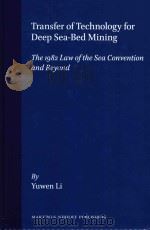
- Transfer Of Technology For Deep Sea-Bed Mining The 1982 Law Of The Sea Convention And Beyond
- 1994 Maptinus Nijhoff Publishers
-
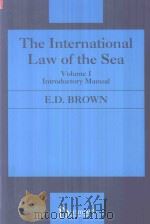
- The International Law of the Sea
- 1994 Dartmouth
-

- The Lawfulness of Deep Seabed Mining Volume I
- 1980 Oceana Publications
-
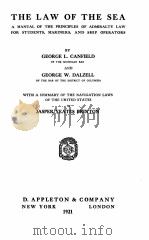
- THE LAW OF THE SEA
- 1921 D. APPLETON AND COMPANY
-
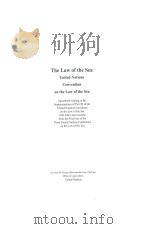
- The Law of the Sea
- 1997 United Nations
-
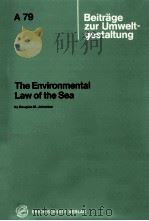
- THE ENVIRONMENTAL LAW OF THE SEA
- 1981 ERICH SCHMIDT VERLAG
-
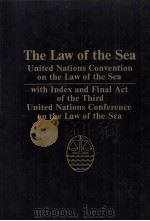
- THE LAW OF THE SEA
- 1983 CROOM HELM LONDON & CANBERRA·ST.MARTIN’S PRESS
提示:百度云已更名为百度网盘(百度盘),天翼云盘、微盘下载地址……暂未提供。➥ PDF文字可复制化或转WORD
